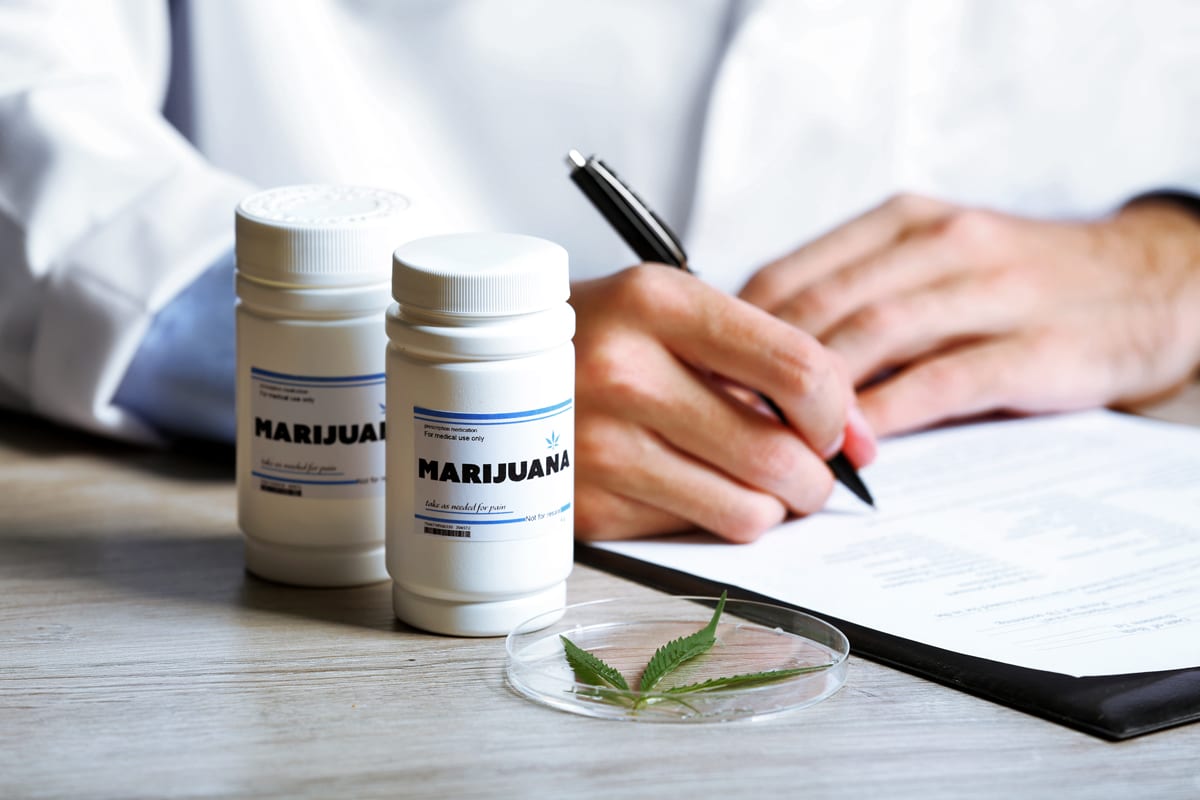Miracle Drug or Hoax?
A lot of people believe the claims made for medical marijuana are a hoax. Just a fabrication designed to push for legalized recreational marijuana.
But they’re wrong.
While investors are betting (and rightly so) on the future of legalized recreational cannabis in Canada … many are forgetting that medical marijuana could, in the long run, become much more lucrative.
In fact, the cannabis company with the greatest market cap in the world is not Canadian industry leader Canopy Growth.
It’s actually British-owned GW Pharmaceuticals, a company that developed the FDA approved cannabis-based drug Sativex, and has a market cap of more than $3 billion USD.
Longer term investors with knowledge of the industry know that greater margins and higher profits can be made from pharma products than recreational products.
Here in Canada InMed Pharmaceuticals is among the few companies researching true drug delivery systems for cannabis.
But still, many people see medical marijuana as invented nonsense.
It’s simply not true.
MEET THE BC GIRL WHOSE LIFE WAS SAVED BY MEDICAL MARIJUANA
Take the case of Kyla Williams, a girl from Summerland, BC, who developed crippling epilepsy at the age of six months.
Traditional medications did not curb her symptoms, and had terrible side effects. Kyla was having more than 100 seizures a day; that’s more than four seizures every hour.
The Williams family were told their daughter would not live much longer.
But then a relative saw a report on Charlotte’s Web, a high CBD (cannabiol) strain of cannabis being used to treat children with cancer and epilepsy. It contains very little THC, which is the ingredient giving people the ‘high’ cannabis is known for.
Kyla began taking the Charlotte’s Web in the form of an oil extract, and her seizures almost completely stopped.
For the Williams family, CBD was indeed a miracle; a miracle that saved their baby’s life.
WILL CANNABIS TREATMENTS BE COVERED BY INSURANCE?
The question for the industry is whether medical marijuana will be covered by provincial pharmacare programs, or alternatively, by private insurers.
To a small extent, that question has been answered in Canada.
In 2015 Sun Life agreed to provide coverage of medical marijuana for Jonathan Zaid. The 22-year-old student at the University of Waterloo couldn’t focus on his studies due to a condition known as Daily Persistent Headache.
The university asked the insurance company to provide coverage, as Zaid couldn’t afford the cost, and Sun Life agreed.
In most analysts’ minds, the Zaid case set the precedent for private insurance coverage of medical marijuana.
LOBLAWS AND SHOPPERS DRUG MART SET THE BAR FOR EMPLOYEE COVERAGE

This week one of Canada’s largest employers made headlines when Loblaws and subsidiary Shoppers Drug Mart decided to cover employees who need medical marijuana.
Claims will be covered by Manulife, and employees are covered for up to $1,500 per year for conditions including spasticity, multiple sclerosis, or nausea due to chemotherapy. The company will also consider coverage for other conditions based on evidence.
This means 45,000 Canadians will now be eligible for medical insurance covering cannabis.
Considering Shoppers Drug Mart has also applied to Health Canada for a license to sell medical marijuana, the company may have a more selfish motivation for the move.
After all, if other companies follow suit, that would boost business for Shoppers’ eventual cannabis sales.
THE CURRENT ROADBLOCK TO A MEDICAL CANNABIS MARKET
While medical marijuana use is legal in Canada, it isn’t actually supported by Health Canada as a legitimate drug.
Cannabis has not been given a Drug Identification Number (DIN), and generally speaking no insurance company will cover a drug that does not have a DIN.
Health Canada has previously said it does not consider medical cannabis to be a proven, effective drug, despite the massive amount of literature supporting its use.
But, as is often the case, industry is surging ahead of government in developing a medical market.
In the US that drive is being pushed hardest by the aforementioned GW Pharma. In addition to Sativex, GW Pharma has three other new cannabis-based drugs in the pipeline including Epidiolex, which is in Phase 3 trials. Two other drugs are in Phase 2 trials.
As well, in the United States doctors can prescribe Marinol (a pharmaceutical version of THC) or Cesamet (a pharmaceutical drug based on cannabis). The latter is primarily for people suffering from nausea due to chemotherapy.
In Canada, however, there are no cannabis-related drugs with a DIN. While Canada has surged past the US in terms of legalization, it is falling behind in terms of medicalization.
That’s not good for the industry, for legitimate patients, or for the Canadian economy.
HOW LARGE IS THE POTENTIAL MARKET?
It is very difficult to calculate the overall size of the potential market for medical marijuana related products, but it is certainly in the many billions of dollars.
We can get some hint of that in Colorado.
The state that first legalized both medical and recreational marijuana is often used to show the projected growth of recreational marijuana in Canada and in other states.
But, in truth, the Colorado experience has shown there is a shining future for medical cannabis alongside recreational.
In 2016 over $1.3 billion worth of marijuana was sold in Colorado, and about 35 to 40 per cent of that was medical marijuana.
The latest figures show that $109 million worth of marijuana was sold in Colorado in January this year, of which $77.9 million was recreational and $31.1 million was medical.
That’s still close to 40 per cent of total sales.
In short, producers and investors in Canada will ignore the medical market at their peril; smart companies will focus on research, development and branding for both markets.
THE OPPORTUNITY FOR CANADA
The key to the future of medical cannabis globally lies in government acceptance and, just as importantly, in accredited research.
Right now, to be frank, Canada is missing out on a global opportunity.
When legalization passes sometime between now and July 1, 2018, Canada will have the largest legal market for cannabis in the world.
This year alone more than a billion dollars is expected to be invested in the industry, most through public companies on the TSX-V.
Should Health Canada, the Canadian Medical Association and universities actively support research and development, the country could easily become the leader in the medical and recreational cannabis industry.
In truth, researchers have only scratched the surface of what medical cannabis can do.
The compounds THC and CBD are relatively well understood, but there are many other compounds within the plant, and no one yet knows their medical potential.
The recreational market for cannabis in Canada will likely top out at $10 billion … but the global market for medical cannabis products will be much larger.
Consider, for example, that the global market for opioids alone is estimated to account for $34.8 billion in 2016.
Medical marijuana is much less harmful than extracts from the opium plant, and has many more uses than just pain relief. For this reason, the global market for such products could easily surpass the market for opioids.
Should Canada embrace the concept of innovation in cannabis research and development, the benefits for the industry and for the country would be extraordinary.
A more altruistic reason is that developing effective cannabis-based drugs will save many lives, and improve the lives of millions of people worldwide.
Canada has a first mover advantage in the fastest growing industry on the planet.
It would be a shame to waste it.












